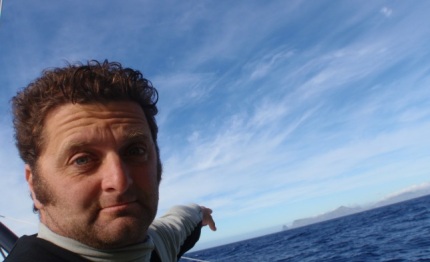VENDÉE GLOBE
Vendée Globe: Thomson Races through the Doldrums

redazione
As he forecast, Alex Thomson (Hugo Boss) appears to have enjoyed the simplest of passages through the doldrums and averaged double-digit speeds overnight (10.7 knots since 1900hrs UTC). On his path on the westernmost part of the fleet, he should have a north wind of between 15/20 knots all morning, decreasing in the afternoon.
Thomson has lost 93 miles to the leader, Francois Gabart (MACIF), over the last 24 hours and is 739 miles behind.
After his heavy losses last week, Thomson has gained 150 miles back because of Gabart’s difficult doldrums. At this time on Wednesday, January 16, Thomson was 872 miles behind.
But third-placed Jean-Pierre Dick (Virbac-Paprec 3) has enjoyed similar success. Dick remains 237 miles ahead of Thomson and 502 miles behind Gabart. This time on Thursday, January 17, Dick was 378 miles behind Gabart, on Tuesday he had been 695 miles behind. His net gain from Gabart’s doldrums is 193 miles.
Gabart gains (a little)
280 miles to the west of Cape Verde, Gabart was again finding the best speed of the top four, but only marginally. He averaged 12.8 knots against the 11.7 knots overnight, Armel Le Cléac’h (Banque Populaire), grinding nine miles further ahead in the same northeasterlies as Thomson and Dick.
They are approaching the Azores high, the situation is still complex. The anticyclone barrier, around 800 miles ahead, can be particularly difficult to negotiate and the front four will be examining the weather files and satellite images to see whether to go around it or if there is a path through the centre.
Boissières also tempted by Rio Carnival
The slow torture continued on the east and west of the course for the middle five of the fleet. But Arnaud Boissières (Akena Verandas) is in a hole again, 180 miles southeast of Rio and like Jean Le Cam (SynerCiel) before him, has perhaps been tempted by the Rio carnival. He averaged just 2.9 knots overnight and only 1.8 knots in the last hour. He has averaged 4.8 knots over the last 24 hours and made just 113.2 miles. For the other four, the weaving in northerly winds, strengthening to 15-20 knots, will continue on Saturday.
© ARNAUD BOISSIERES / AKENA VERANDAS / Vendée Globe
19/01/2013 14:25:00 © riproduzione riservata
Tweet
CORRELATI
DELLA SETTIMANA
Nautica: gli scenari di mercato secondo Confindustria Nautica
Confindustria Nautica, riunita nell’Assemblea annuale dei Soci, ha presentato l’analisi previsionale sull’andamento del settore, realizzata dall’Ufficio Studi dell’Associazione
San Foca: IV regata "Più Vela per Tutti"
Un mare affollato quello di ieri al largo di San Foca, grazie ad una bella giornata di sole e di vento ‘giusto’, anche per la flotta di ‘Più Vela Per Tutti’, che ha disputato la sua quarta regata del campionato invernale
50° Invernale del Tigullio: sorridono Spirit of Nerina, Sease e Ariarace
Spirit of Nerina (ORC A-B), Sease (ORC C) e Ariarace (Rating FIV). Sono questi gli equipaggi che festeggiano al termine della prima manche del 50° Campionato Invernale del Tigullio
Giovani campioni al vento: partito a Vilamoura lo Youth Sailing World Championships 2025
Dal 12 al 20 dicembre 2025 la Marina de Vilamoura, in Portogallo, è teatro dei Youth Sailing World Championships 2025, l’evento iridato giovanile che mette a confronto i migliori talenti velici under 19 di tutto il mondo
Invernale Napoli: vincone Raffica, Eurosia Pompa Pa’ e Sly Fox Cube
L’equipaggio di Orofino vince il Trofeo Gaetano Martinelli (ORC), quello di Neri e Cassese il Trofeo Oreste Albanesi (Sport Boat), mentre il team di Fotticchia conquista il Trofeo Paola Martinelli (Gran Crociera)
Jules Verne Trophy: The Famous Project CIC verso Buona Speranza
L'equipaggio capitanato da Alexia Barrier e Dee Caffari dopo un rallentamento per un guasto meccanico viaggia spedito verso il Capo di Buona Speranza
Napoli: oltre 100 barche in acqua per sostenere Telethon
Grande successo per il Trofeo Fondazione Telethon, la regata destinata a raccogliere fondi a favore della ricerca sulle malattie genetiche rare
Trofeo Jules Verne: partito anche Thomas Coville
Sodebo Ultim 3, il maxi-trimarano francese guidato da Thomas Coville, è salpato il 15 dicembre 2025 per un nuovo tentativo di record sul Trofeo Jules Verne, il giro del mondo senza scalo né assistenza
Thailandia: una Regina in regata
Sua Maestà la Regina Suthida di Thailandia scenderà in acqua insieme al Team Thailandia per le regate della Star Sailors League
Tre Golfi Sailing Week 2026: oltre cento equipaggi da sedici Paesi per un’edizione memorabile
Più di 100 imbarcazioni provenienti da 16 Paesi hanno confermato la propria partecipazione, a testimonianza di quanto questo appuntamento sia ormai tra i più prestigiosi e attesi del calendario velico internazionale
